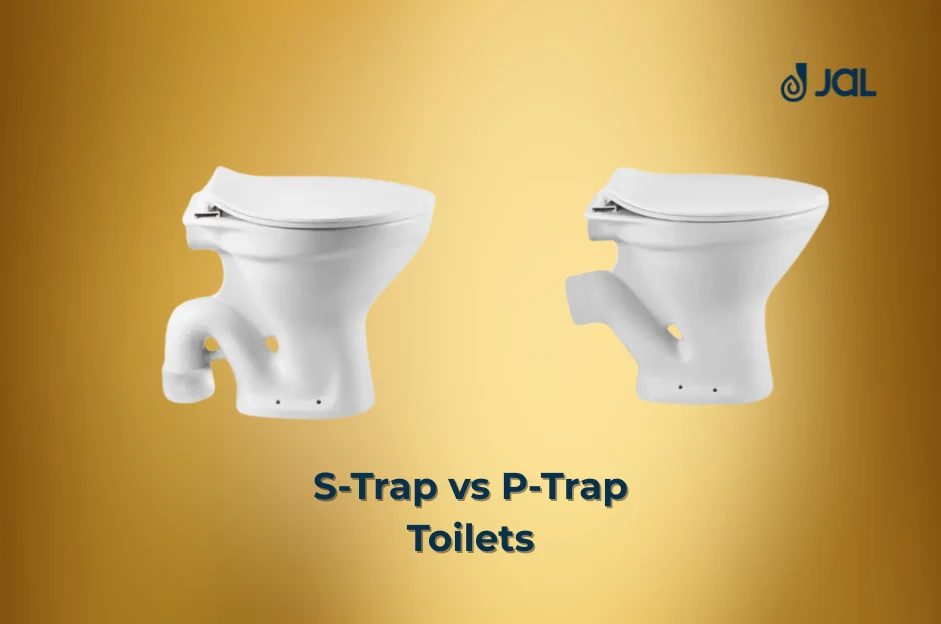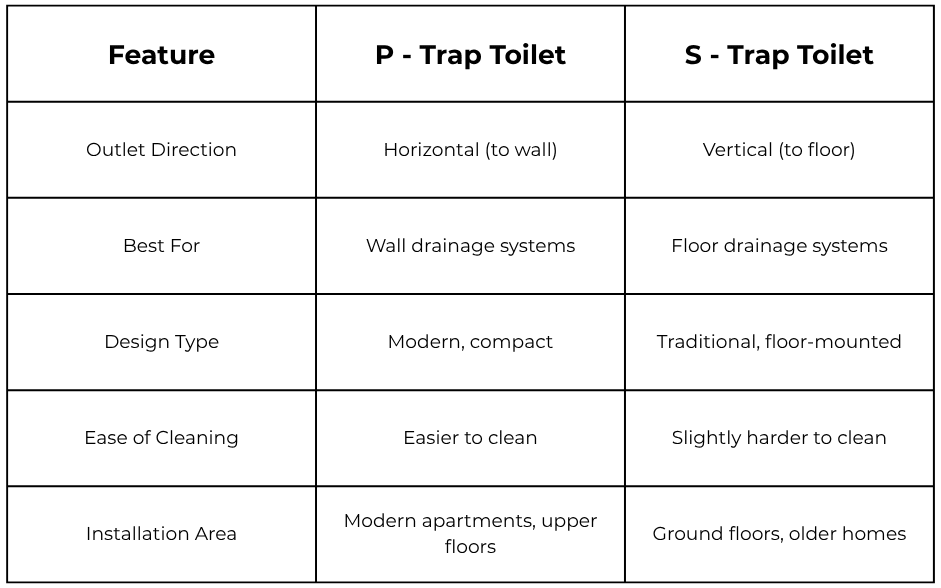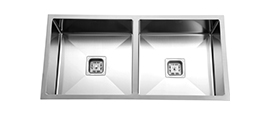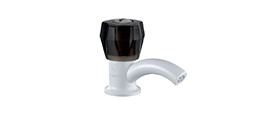Understanding P-Trap and S-Trap Toilets: Which Is Best for Your Bathroom?

When designing or renovating a bathroom, choosing the right toilet type might seem like a small detail, but it plays a big role in how your plumbing functions. Most homeowners focus on looks, comfort, or design, but the type of toilet trap is what truly determines compatibility with your bathroom’s drainage system.
Knowing the difference between a P-trap and an S-trap will provide the basis for saving yourself any hassle during the installation process. This will also help keep the place hygienic and prevent any leaks or foul smells. In this blog, we’ll explain what sets P-trap vs S-trap toilets apart and help you decide which one is best for your space.
What Is a P-Trap Toilet?
A P-trap toilet has a horizontal outlet that is connected directly to the wall drain. The trap is in the form of the letter P, ensuring that water is kept in the bend. This creates a seal, preventing sewer gases from escaping into your bathroom.
Most modern apartments and wall-mounted bathroom fittings utilise these toilets, where the drainage pipe runs through the wall rather than the floor.
The main advantages of a P-trap toilet:
i) Ideal for bathrooms with wall-mounted toilet drains.
ii) Easy to clean, as it features an open and visible pipe structure.
iii) Sleek look and fits modern interior.
Limitations:
i) It cannot be used when there is an outlet for floor drainage in your house.
ii) Needs precise wall alignment when installing.
A P-trap toilet is an ideal fit for modern bathrooms that priortise beauty and smart plumbing on the wall.
What Is an S-Trap Toilet?
An S-trap toilet is the more traditional design, where the outlet pipe is dug into the floor. The S-shape of the trap allows waste to be transported vertically to the ground drain. Thus, it is a suitable trap to use in homes or old structures where plumbing is placed underneath the floor.
The major advantages of an S-trap toilet are:
i) Ideal for floor-mounted drainage systems.
ii) Easier to install in an old house without modifying the existing plumbing.
iii) Provides strong flushing performance.
Limitations:
i) A little more challenging to clean around the base due to the trap’s shape.
ii) Occupies more floor space than wall-mounted products.
In houses where the floor outlet or the bathroom is on the ground floor, the s-trap toilet will be a good and efficient option.
P-Trap vs S-Trap Toilets: The Key Differences
The main difference between a P-trap and an S-trap is the connection to the drainage outlet. A brief comparison will put you into a better position:

When deciding between P-trap and S-trap toilets, the choice mainly depends on your bathroom’s plumbing layout rather than just appearance.
S-Trap or P-Trap: Which Is Better?
When it comes to S-trap vs P-trap, which is better, there isn’t a single answer. It all depends on your bathroom’s drainage system.
If the bathroom outlet is on the wall, a P-trap toilet should be selected. It is smooth, space-saving, and can be combined with wall-mounted fittings. However, you will need to have an S-trap toilet in case your outlet is located in the floor. It has high flushing capabilities and is less difficult to install in traditional designs.
Here’s a simple rule:
i) A wall outlet means a P-trap toilet
ii) Floor outlet means S-trap toilet
The modern bathroom fittings at JAL include both trap fittings, allowing homeowners to be flexible without losing the style or functionality of the fittings.
Tips for Choosing the Right Toilet for Your Bathroom
Selecting between a P-trap and an S-trap is just one part of your bathroom planning. The right choice would also be based on the space, lifestyle, and overall bathroom fittings. Some helpful tips are as follows:
i) Know Your Drainage Type: Before purchasing, determine whether your outlet is wall-mounted or floor-mounted. This will make a difference between a P-trap and an S-trap toilet.
ii) Match Design with Space: In smaller or contemporary bathrooms, a wall-mounted P-trap toilet appears smart-looking with its floating appearance. The S-trap is a convenient and stable toilet option for traditional or large spaces.
iii) Consider Maintenance: Select a design that allows for easy cleaning of the sanitaryware around the trap and the bottom. A curved surface is used to avoid the accumulation of dirt.
iv) Check Water Efficiency: Replace single-flush toilets with dual-flush ones that save more water without compromising performance.
Why Understanding Trap Type Matters
A significant number of homeowners do not pay attention to the type of trap they buy when purchasing toilets; instead, they focus on design or price. However, an inappropriate choice of trap for your drainage system may lead to significant plumbing problems in the future, including leaks, obstructions, or insufficient flushing.
Understanding the basics of P-traps and S-traps, you will be able to make a competent choice and ensure a successful installation, as well as a comfortable living space.
Conclusion
Whether you’re building a new home or renovating your bathroom, selecting the right toilet design is crucial for both comfort and functionality. The P-trap vs. S-trap decision primarily depends on the location of your drainage outlet, whether it is on the wall or floor.
While P-trap toilets suit modern bathrooms with wall outlets, S-trap toilets remain a dependable option for floor drainage systems. Both types, when chosen wisely, can enhance the efficiency and cleanliness of your bathroom.
Start your bathroom upgrade today with fittings that match your home’s layout and lifestyle.
Frequently Asked Questions
1. What is the main difference between a P-trap and an S-trap toilet?
The main difference lies in the outlet direction. A P-trap toilet connects to a wall outlet, while an S-trap toilet connects to the floor. The right choice depends on your bathroom’s drainage layout.
2. Which is better, a P-trap or an S-trap?
Neither is better universally; it depends on where your outlet is. P-trap toilets are ideal for wall-mounted drainage systems, while S-trap toilets work best for floor outlets.
3. Can I replace an S-trap toilet with a P-trap toilet?
It’s possible but not simple. You’ll need to modify the drainage outlet from floor to wall, which requires a plumber’s help and can add to installation costs.
4. How do I know which trap my toilet has?
Check the direction of the outlet pipe. If it goes into the floor, it’s an S-trap. If it goes into the wall behind the toilet, it’s a P-trap.
5. Which brand offers both P-trap and S-trap toilets in India?
JAL offers a wide range of high-quality bathroom fittings, including both P-trap and S-trap toilets. Their designs combine efficiency, style, and durability, perfect for modern Indian homes.














